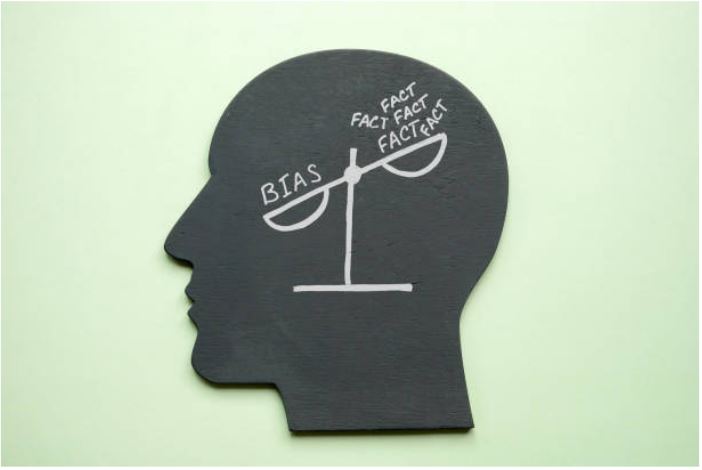Making big life decisions can be challenging and what can make it even trickier is when our brains weave in biases, clouding our judgment, without us even realizing it. Unconscious biases are the automatic, mental shortcuts our brains use to process information quickly, often based on stereotypes or past experiences.
They’re not all bad. Unconscious biases can sometimes have beneficial aspects, particularly in decision-making efficiency and social cohesion. These biases allow us to make quick judgments based on past experiences and ingrained patterns, which can be helpful in situations requiring rapid decisions. They can foster group solidarity by promoting a sense of shared identity and common understanding among individuals with similar backgrounds or beliefs.
Unconscious bias can manifest in various forms. Here are a few common types:
- Affinity Bias: Favoring people or groups that are similar to us in background, interests, or experiences.
- Confirmation Bias: Seeking out information that confirms our preexisting beliefs while ignoring contradictory evidence.
- Anchoring Bias: Relying too heavily on the first piece of information encountered (the “anchor”) when making decisions.
- Halo Effect: Allowing one positive trait to overshadow other, possibly negative, attributes.
So while these biases can be helpful at times, they can also lead to unfair or ill-informed decisions. The trick is to be aware of them. Aware of how they can impact our decisions and try to mitigate their potential negative impacts. The good news: there are many ways to help mitigate bias and make fairer and more informed decisions. Here are a few ways to do so:
- Self-Reflection: Regularly reflect on your decision-making process. Ask yourself whether your choices are influenced by stereotypes or assumptions.
- Seek Diverse Perspectives: Consult with people from different backgrounds and viewpoints. Their insights can help you see beyond your own biases.
- Use Data and Evidence: Base your decisions on objective data and evidence from a variety of reliable sources, rather than intuition or gut feelings. This approach can help counteract biases like confirmation and anchoring.
- Slow Down: Take your time with significant decisions. Rushed decisions are more likely to be biased. Spend extra time thinking through a variety of options and outcomes.
- Implement Structured Decision-Making Tools: Use tools that provide structured frameworks for decision-making. These can help ensure that all relevant factors are considered systematically.
- Unconscious Bias Training:
Being mindful of unconscious bias is essential for making sound and fair decisions in life’s major moments. By recognizing and addressing these biases, you can enhance your decision-making process, leading to better outcomes and a more balanced perspective. Remember, the goal is not to eliminate all biases—that’s nearly impossible—but to be aware of them and mitigate their impact on your decisions.
Here are some examples of how biases can sneak into life’s biggest decisions.
Career Choices: When considering job opportunities, be aware of the affinity bias. For instance, if a job seeker comes across a company where the hiring manager attended the same university or shares similar hobbies, they might be more inclined to pursue that job despite it offering a lower salary, fewer growth opportunities, or less alignment with their long-term career goals.
This bias could result in a decision that prioritizes personal comfort over professional advancement. Ensure that your choice is based on the role’s alignment with the criteria most important to you, rather than the similarity between you and the interviewer.
Home Buying or Renting: Confirmation bias can lead you to favor a home because it fits your initial criteria, even if it has significant downsides. For example, someone searching for a new home might believe one home is perfect because they might focus on its positive features like a large yard or modern kitchen, and overlook or downplay negative aspects such as structural issues or a high crime rate in the neighborhood.
This selective attention can lead to an imbalanced evaluation of the property, potentially resulting in a decision that overlooks critical flaws or risks associated with the selection. Use objective criteria to evaluate all aspects of the property and seek input from trusted sources, like real estate agents, mortgage brokers, or other experts in the industry.
Dating: The halo effect can cause you to overlook potential red flags because of one outstanding trait in a partner. For example, if someone is exceptionally physically attractive, a dater might unconsciously attribute positive qualities such as kindness, intelligence, or trustworthiness to them without sufficient evidence.
This bias can lead to overlooking red flags or negative traits, such as incompatibility in values or interests, simply because the initial impression is overwhelmingly positive. This can result in pursuing a relationship that might not work out in the long term. Take time to get to know the person fully before making any long-term decisions.
Selecting a Post-Secondary Institution: When choosing a college or university, anchoring bias might lead you to overly favor a school based on its initial presentation or a single standout feature, like its name or a particular program. For example, you might favor a prestigious university because of its renowned business school, overlooking the fact that its location and campus culture might not suit your needs. To counteract this, thoroughly research multiple schools, visit campuses if possible, and consider factors like student support services, campus life, and financial aid options.
Sources:
- Affinity Bias: Ross, H., & Roberts, C. (2016). “The Different Types of Unconscious Bias.”
- Confirmation Bias: Nickerson, R. S. (1998). “Confirmation Bias: A Ubiquitous Phenomenon in Many Guises.”
- Anchoring Bias: Tversky, A., & Kahneman, D. (1974). “Judgment under Uncertainty: Heuristics and Biases.”
- Halo Effect: Nisbett, R. E., & Wilson, T. D. (1977). “The Halo Effect: Evidence for Unconscious Alteration of Judgments.”
- Self-Reflection: Greenwald, A. G., & Banaji, M. R. (1995). “Implicit Social Cognition: Attitudes, Self-Esteem, and Stereotypes.”
- Seek Diverse Perspectives: Page, S. E. (2007). “The Difference: How the Power of Diversity Creates Better Groups, Firms, Schools, and Societies.”
- Use Data and Evidence: Kahneman, D. (2011). “Thinking, Fast and Slow.”
- Slow Down: Gigerenzer, G., & Gaissmaier, W. (2011). “Heuristic Decision Making.”
- Structured Decision-Making Tools: Hammond, J. S., Keeney, R. L., & Raiffa, H. (1999). “Smart Choices: A Practical Guide to Making Better Decisions.”
- Career Choices: Bohnet, I. (2016). “What Works: Gender Equality by Design.”
- Home Buying: Thaler, R. H., & Sunstein, C. R. (2008). “Nudge: Improving Decisions About Health, Wealth, and Happiness.”
- Dating: Finkel, E. J., Eastwick, P. W., & Matthews, J. (2007). “Speed-Dating as an Invaluable Tool for Studying Romantic Attraction.”
- Selecting a Post-Secondary Institution: Pascarella, E. T., & Terenzini, P. T. (2005). “How College Affects Students: A Third Decade of Research.”

